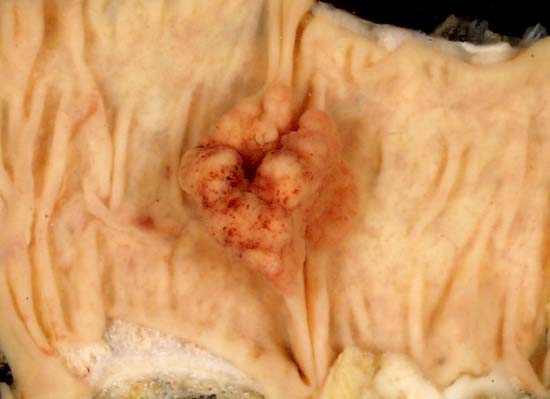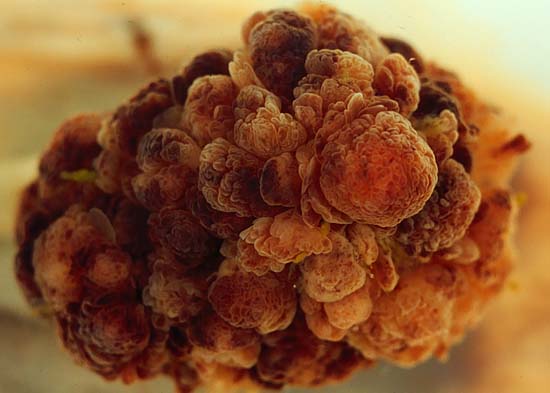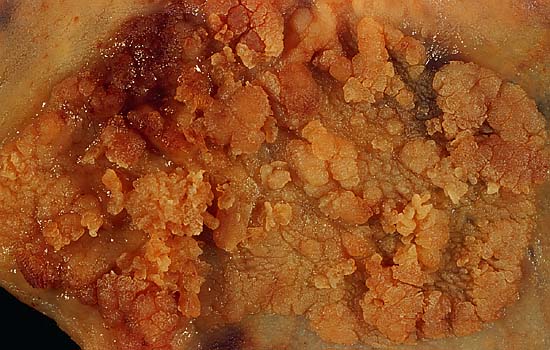Adenoma pathophysiology
Editor-In-Chief: C. Michael Gibson, M.S., M.D. [1]
|
Adenoma Microchapters |
|
Diagnosis |
|---|
|
Treatment |
|
Case Studies |
|
Adenoma pathophysiology On the Web |
|
American Roentgen Ray Society Images of Adenoma pathophysiology |
|
Risk calculators and risk factors for Adenoma pathophysiology |
Editor-In-Chief: C. Michael Gibson, M.S., M.D. [2]
Overview
Pathophysiology
Adenoma is a benign epithelial tumor arising in epithelium of mucosa (stomach, small intestine and bowel), glands (endocrine and exocrine) and ducts. In hollow organs (digestive tract) the adenoma grows upwards into the lumen - adenomatous Polyp (or polypoid adenoma.
Depending on the type of the insertion base, adenoma may be pedunculated lobular head with a long slender stalk, covered by normal mucosa or sessile (broad base).
The adenomatous proliferation is characterized by different degrees of cell dysplasia (atypia or loss of normal differentiation of epithelium) irregular cells with hyperchromatic nuclei, (pseudo)stratified nuclei, nucleolus, decreased mucosecretion and mitosis. The architecture may be tubular, villous or tubulo-villous. Basement membrane and muscularis mucosae are intact.
-
Adenomatous polyp of the colon. Courtesy of Ed Uthman, MD
-
Tubulovillous polyp of the colon. Courtesy of Ed Uthman, MD
-
Villous adenoma of the colon. Courtesy of Ed Uthman, MD


